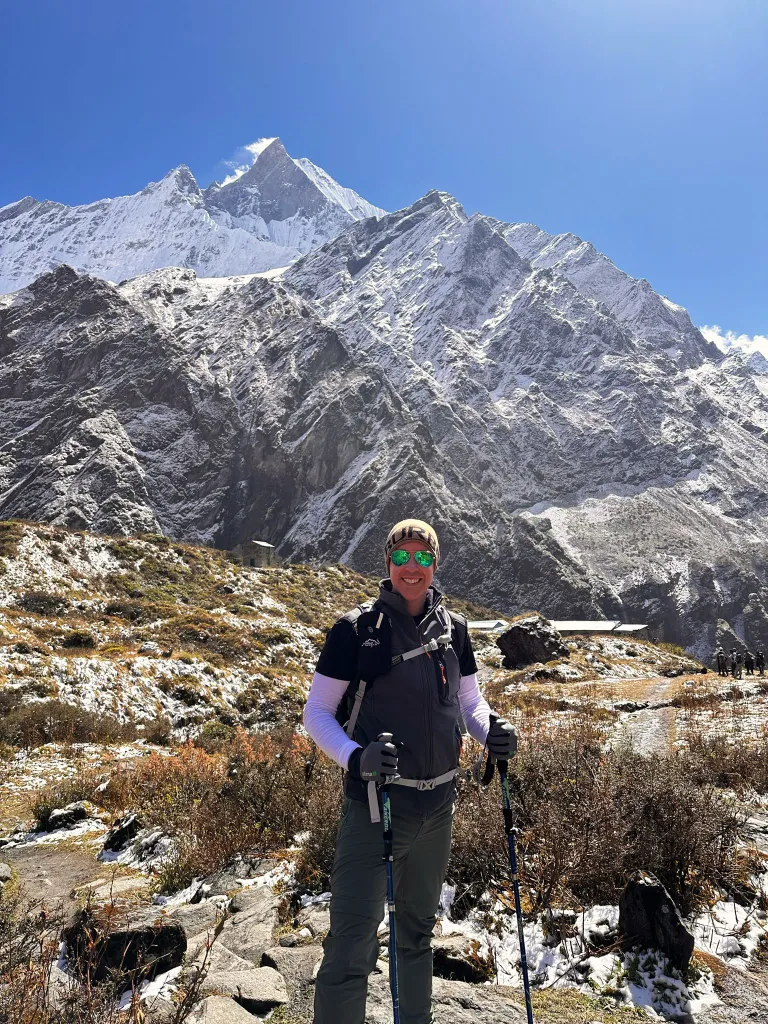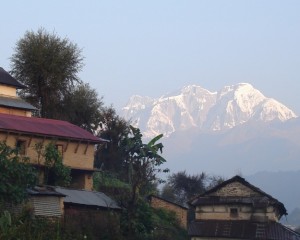How Long Is The Tsum Valley Trek?
You are thinking of experiencing the hidden cultural wonders of the remote region, but you are having second thoughts about going to those crowded trekking regions. Then you came to the right place. Tsum Valley Trek, also called 'Little Tibet,' is located on the lap of Mt. Manalsu.
The place is open to Nepal and Tibet, and we can see the Tibetan culture and artefacts preserved in this region for centuries now. The majestic presence of Ganesh, Manaslu, Shringi and the heavenly Tsum Valley itself highlights the trail.
Apart from that, the Tsum Valley Trek is two weeks long and explores the untrodden gem of the Manaslu region. And you do not have to cross those high glaciers like in the classic Manaslu Circuit Trek. Prepare the glass as we are ready to spill all those juicy details about the Tsum Valley Trek.
Is Tsum Valley worth it?
After the scenic drive from Kathmandu to Sotikhola, your official walk of the trek starts from the following day. The initial part of the trail is the muddy road with cascading waterfalls and a suspension bridge in the Budhi Gandaki and Syar rivers. At the same time, the rugged alpine terrain, challenging trails, and dense forest of oak and pine with the marvellous presence of the Ganesh and Manaslu ranges.
The first part of the trail can be tricky. But as you reach Chhokang Paro, you should be up for a surprise. As the landscape transitions into greenery and alpine region, the cultural beauty of the trail starts from this place.
Aside from Manalsu, the Naike, Shringi, Himalchuli, and Choke stand right there that provide the perfect backdrop for the valley. Besides, the beautifully encrypted mani wall decorated with a flying chorten flag and spinning prayer wheel and peaceful monasteries like Mu Gompa and Rachen Gompa gives you a different perspective of the cultural aspect of the local people.
The Tsum Valley Trek offers a perfect balance of challenge and enjoyment. The highlight of the trek is the Milarepa cave, a natural wonder of the region. The walk is moderately challenging, and you'll have the opportunity to explore side trails like Gompa Lungdang, Manaslu Base Camp, Birendra Lake, Kal Tal, and the border with Tibet. It's an adventure waiting to be embraced.

What Makes Tsum Valley Trek Long?
When you explore the gems of the Tsum Valley trek, you may be excited to be a part of it. But you might have the question: why is the trek two weeks long? Well, different factors contribute to the duration, and those are all worth it.
Amazing Side Trip
Despite your classic 12-day itinerary for the Tsum Valley trek, the region offers some opportunities. One such opportunity is the alluring side trips to the Gompa Lungdang, Pungyen Gompa, Manaslu Base Camp—the list goes on and on. We would personally recommend you come with flexible timing because the experience of these cultural gems is a once-in-a-lifetime opportunity you might not want to miss out on.
Trekkers Pace
Yes, the trails of the Tsum Valley trek are moderately challenging. But not everyone has the stamina to navigate them. Someone might slow down along our trek and take those required short breaks. In such cases, the trek duration can be expanded.
Weather
The best seasons, like spring and autumn, may not cause many problems on the trail. However, sudden changes in weather can be a challenge, like sudden rainfall in late spring and snowfall in late autumn. In this case, you have to be flexible in your itinerary because we might not always have information about this sudden change. At the same time, the summer season is not feasible for the trek, especially in the region.
What is the difficulty of the Tsum Valley Trek?
As previously said, the Tsum Valley Trek is a recently opened branch of the classic Manaslu Circuit Trek. But when we compare them, Tsum Valley Trek is by far more accessible than Manaslu. The trail passes through steep ascents and descents and lush forests, although walking is more accessible for people in good physical condition.
The major challenge of the trail is the gaining altitude as you reach up to 3600m. The surge in this altitude can cause altitude sickness. To tackle this, you get to acclimatize at Mu Gompa. Besides, this opportunity gives you an extra day to explore the remote region gem.
Furthermore, you should maintain your pace in your daily walks and hydrate yourself to prevent altitude sickness. Good physical condition and the proper gear and equipment will help you navigate the trail during the descent.
How To Prepare for the Tsum Valley Trek?
There are different things you should prepare for the Tsum Valley Trek. Each thing has an outstanding contribution to make your trek successful.
Physical Fitness
When it comes to physical fitness, you should take the staircase, talk more frequently, and go for a long hike in your local area.
Apart from that, you should start changing your fitness routine and include some strength training and functional training. These are known to work like a charm in enhancing your stamina. It would be even better if you had prior trekking experience, as it can help in your next adventure.
Gear and Equipment
You must have a sturdy pair of outer, mid, and base layers. Along with them come trekking boots and comfortable T-shirts. But for a detailed packing list, you should check your requirements and then consult with your trek guide. At the same time, you have the option to rent the gear in Thamel and Pokhara.
- Clothing: Base layers, trekking pants, waterproof jacket, down jacket, gloves, hat
- Footwear: Trekking boots, camp shoes, socks
- Bags: Daypack (20-30L), duffel bag, dry bags
- Sleeping Gear: Sleeping bag (-10°C)
- Accessories: Trekking poles, sunglasses, headlamps, water bottles, purification tablets
- Personal Items: First aid kit, toiletries, portable charger
Permit
Since the Tsum Valley trek is a restricted trekking area, you have to hire a professional trekking operator like Nepal Vision Trek as per the government rules. They will handle all your permit and accommodation requirements without any hassle for you to face.
But the permit required for the trek are:
- Manaslu Conservation Area: 3000 NPR
- Restricted Area Permit: 40$ (Sep-Nov), 30$ (Dec-Aug)
To wrap up, The Tsum Valley is a newly opened trekking adventure that takes you back to an ancient time when the culture of the Tibetan people was preserved. Plus, the stunning landscape, majestic mountains, and deep sense of spirituality make the trail one of a kind.
When you prepare properly under the guidance of an expert trek operator like the Nepal Vision Trek, you are well on your way to a safe and rewarding trek experience.
FAQS






